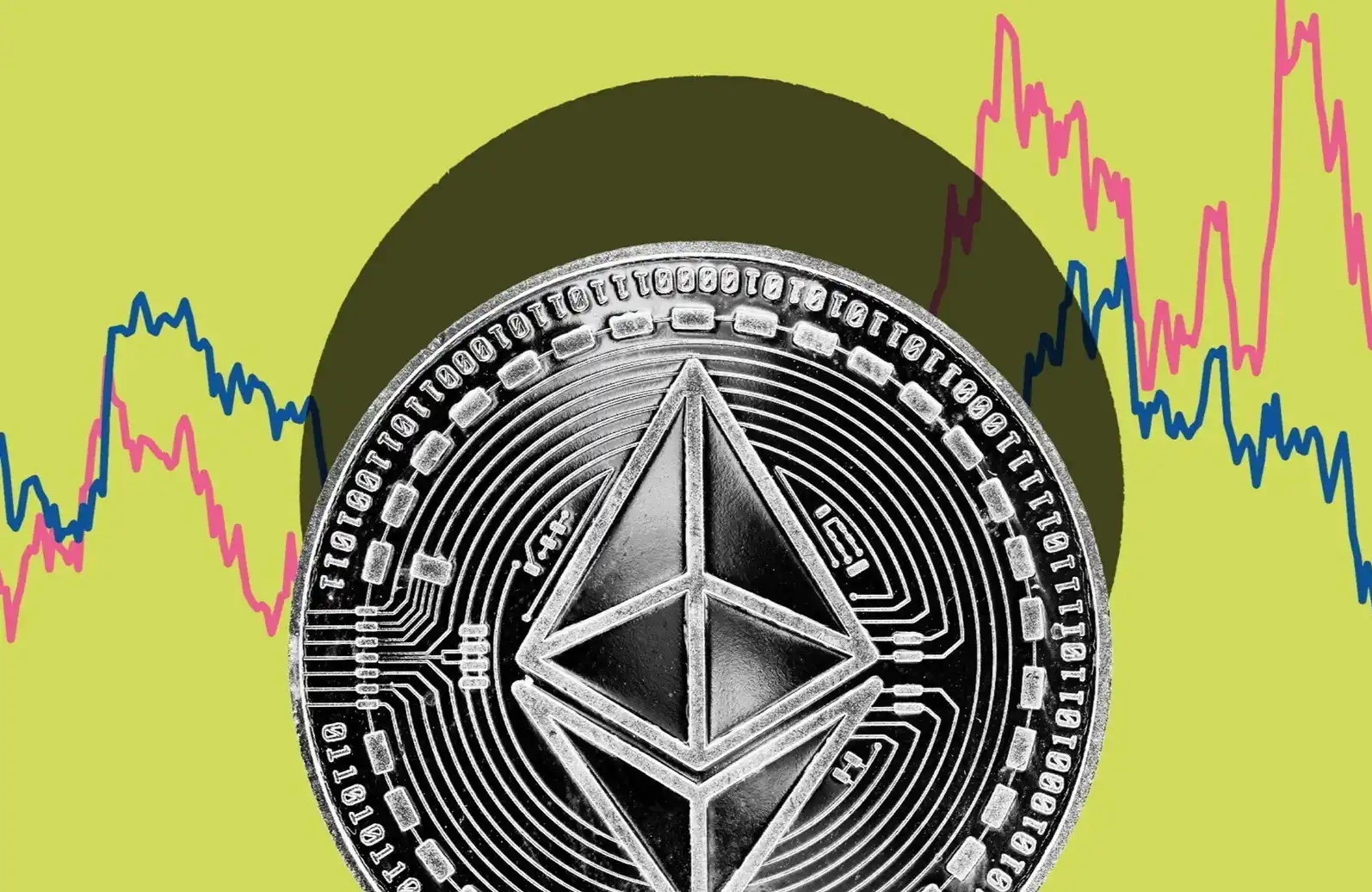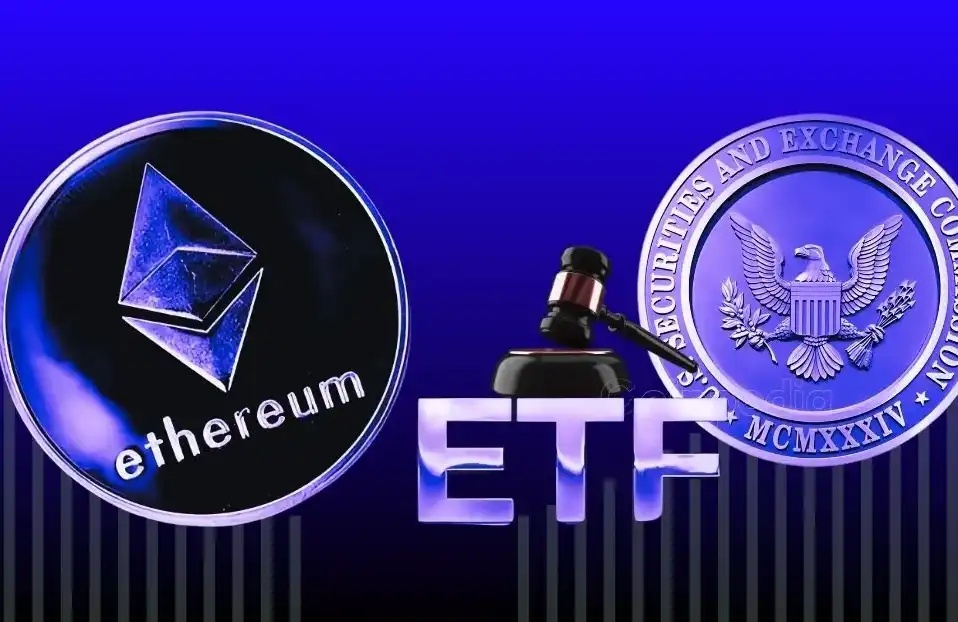Take stock of the NFT underlying protocol standards on Ethereum
NFT Protocol Standards on Ethereum
Black Mario
ERC721 is the most basic metadata structure protocol standard of NFT on Ethereum. As a kind of cryptocurrency, ERC721 is characterized by the minimum unit of 1 and non-homogeneity, that is, any two NFT assets cannot be exchanged. Based on this feature, ERC721 also has many application potential.
With the development of NFT Track, the application of NFT is more and more extensive. In addition to the earliest artworks, collectibles, and PFP, which accounts for half of the market value of NFT Track, it is also facing Web3 users in many new forms, such as game props, music works, domain names, etc. Of course, the most basic ERC721 protocol standard has only the most basic NFT features, and it cannot meet the further needs of market development in a native form without building external mechanisms, such as nested combinations, royalty distribution, leasing, volume trading, and so on.

With the review and testing of the Ethereum development team, one after another through the different characteristics of the NFT protocol standard proposal, based on the ERC721 standard, NFT protocol standards have been continuously enriched such as ERC1155, ERC998 and so on, based on these new protocol standards cast NFT, native with different characteristics, And to match the increasing demand for NFT market.
In addition, there are some NFT protocol standards (still under discussion) in the form of "EIP" improvement proposals, such as EIP4907, EIP/3664, etc. EIP proposals generally include design documents with technical specifications and design logic. From the user's point of view, ERC is essentially the same as EIP, which is an optimization proposal for the protocol put forward by the Ethereum community developers. However, when the EIP is approved by the Ethereum community (of course, this process needs to go through a series of processes, such as conception, draft, review, final review, finalization, stagnation, withdrawal and dynamic) and finally implemented on a large scale, EIP becomes the ERC standard.
This paper will make a brief inventory and review of some major NFT underlying protocol standards in the Ethereum market.
ERC721: Basis of the NFT protocol standard
ERC721 是以太坊上最早也是最基础的 NFT 底层协议标准,由 Axiom Zen 的技术总监 Dieter Shirley 在 2017 年 9 月提出,并由 William Entriken、Dieter Shirley、Jacob Evans 和 Natassia Sachs 等人于 2018 年制定。其作为一种非同质化 Token 智能合约标准接口,允许发行基于 ERC721 的 NFT,它规定了 NFT 资产的最小单位为 1、不可拆分且非同质化(独一无二)的特性,ERC721 是目前 NFT 资产的主要规范标准与基础之一(并也为其他链上 NFT 标准的制定提供了参照),目前以太坊绝大多数 NFT 都是 ERC721 标准的。
CryptoKitties is the earliest application case of ERC721 NFT standard. With the popularity of CryptoKitties, NFT with ERC721 as the main technical standard has been further adopted, and is favored by investors with the continuous richness of its narrative.
ERC1155: Single smart contract handles NFT assets in bulk
ERC-1155 was proposed by Enjin CTO Witek Radomski and other developers, and on June 17, 2018, the first version of the standard was put into Ethereum's Github library. It can be used to generate and process items in the game industry.
ERC1155 的特点在于,能够基于一个合约同时发行多个 NFT(或者 FT),允许使用者在同一个智能合约中无限量地重复使用同质化或者非同质化的 Token ,是可以一次性铸造多种多量同质化及非同质化资产的以太坊标准。这意味着,ERC1155 允许我们既可以发行同质化也可以发行非同质化 Token ,当对同质化和非同质 Token 都有需求时都可以在此标准上发行,无需切换别的标准。与此同时,基于 ERC1155 可以批量转移 Token 资产,一次操作就可向不同对象转移多个 Token 资产。
In the past, we need to release and transfer the NFT of ERC721 standard one by one, which is not only inefficient but also expensive (Gas fees). ERC1155 can greatly improve the efficiency and reduce the cost, which is widely adopted by some GameFi projects.
目前 Enjin network 是支持 ERC1155 协议标准的应用之一(支持发行),此外 The Sandbox 也将 ERC-1155 作为其首选 Token 标准,而随着 NFT 赛道的发展,ERC-1155 也有望被进一步采用。
ERC998:可组合 Token 特性
ERC998 标准最初是由知名开发者 Matt Lockyer,在 2021 年 4 月 15 日提出的一种名叫可组合非同质化 Token (Composable NFTs, 缩写为 CNFT)的构想,并且在 2022 年被一些 GameFi 项目所采用。
ERC998 是一种允许任何一个 NFT 与其他 NFT 或 FT 捆绑的底层协议标准,用户可以在转让 CNFT 时实现 CNFT 的整个层次结构和所有权转移。简要地说,ERC-998 可以包括以 ERC-721 和 ERC-20 形式的多个令牌。比如,一个游戏中的 NFT 道具,它可以包含多个 ERC721 标准的 Token ,以及 ERC20 Token 组合(得到的形式可以是升级、融合等等),而该 ERC998 NFT 道具可以整体的交易转让,它极大的简化了 NFT 资产的所有权和交易行为。
ERC1948: readable and mutable information
ERC1948 can be understood as the dynamic version of ERC721. It not only has the basic features of ERC-721, but also adds a 32 byte data field to the NFT and allows the user to access the read function of the NFT. The owner of the NFT has permission to update the data.
Although ERC1948 has certain limitations on the capacity of data storage, the ERC-1948 protocol enables NFT to store dynamic data, such as the change of some props properties, values, and so on. Based on this, with the further improvement of its ability to store data, it will have a very important application prospect.
ERC2981: Royalties
A few months ago, there was a heated debate over royalties for NFT works (mainly art and collectibles), with users with different views on whether to charge royalties for each transaction. In the early days, royalties were usually set through the NFT trading platform. For example, on OpenSea, the royalty paid by the buyer to the NFT creator is set by the NFT creator at a maximum of 10%. OpenSea will transfer these NFT royalties every two days to a collection address designated by the NFT creator.
ERC2981 is embedding the royalty mechanism into the asset at the release stage, that is, every time the NFT makes a transfer transaction, part of the royalty will be deducted from the transaction volume (the royalty can be customized according to fixed, attenuated, dynamic, etc.), which means that the creators get the royalty and will no longer rely on the NFT trading platform. And further help NFT creators increase their revenue pipeline.
ERC875: Bulk transfer of assets
ERC875 is an underlying protocol standard that allows users to bulk trade NFTS. Based on this standard, users can purchase and migrate multiple NFTS in a single transaction.
ERC875 protocol family at present mainly carried out two core improvements: one is Magic Link to achieve atomic trading, the other is packaging function.
Magic Link is mainly used to lower the threshold for users to get started. After tokenizing assets, users can generate Magic Link for display or transaction, and ordinary users can also directly make requests without paying GAS fees at the beginning. The packaging function mainly targets at such businesses as ticketing. It can package multiple assets for overall display, circulation and processing.
In the ERC-875 Agreement, the user can place an order by encrypting the signature of information including price, transaction expiration date, and signature. The process is done off-chain and is broadcast on-chain only at settlement, which means users can transact without having to pay Gas fees, saving a lot of Gas. When a buyer is willing to buy, all he needs to do is accept the order and broadcast it with the order details, plus buy money to complete the transaction. Therefore, for ERC875, in addition to reducing GAS costs, it can also be convenient for users.
ERC1523: NFT policy
It is indeed a good idea to use the form of an insurance policy in the form of an NFT. As we have seen, an insurance policy is a financial asset that is unique in some way. The policy allows the customer to be associated with a particular risk, or has other unique attributes such as premium, duration, carrier, insurer, etc. After the policy is further NFT, the policy can be circulated as an asset that can be traded and transferred.
ERC1523 is an NFT protocol standard aimed at building applications in this area. It defines a minimum metadata structure on top of the existing ERC721 protocol standard that allows the implementation of a standard API for insurance policies in smart contracts, in order to make as many policy classes common as possible. Although there are not many application cases of ERC1523 as a whole at present, it provides a basis and reference for further construction of insurance in a broad sense on the chain in the future.
Family bucket with rental features: ERC4907, EIP2615, EIP5006
ERC721 by itself does not support the separation of rights of use and ownership of NFT, i.e. only those who own NFT have rights of use. Then the emergence of Protocol standards such as ERC4907 (proposed by Double Protocol of NFT Leasing market EIP4907 and adopted in June 2021) and EIP2615 (proposed by Kohshi Shiba in April 2020), It further allows NFT to separate use rights from ownership.
Although both ERC4907 and EIP2615 are extensions of ERC721, there are some differences between them.
ERC4907 builds an additional role that can grant an address, and a time (expires) for the role to automatically revoke. Roles represent permissions to "use" NFT, but do not represent the ability to transfer or set. That is, the owner of an NFT can assign a "lease" characteristic with the right of use to an address, and automatically form a lease relationship after further establishing the lease time factor, and automatically terminate the lease relationship when the lease time expires (the lease relationship will not change with the transfer of the ownership of an NFT). ERC4907 itself has no mandatory means to restrict the use of the leaseholder, that is, the owner of the right to use it can carry out all interoperability operations without a license except to transfer and set it up. Currently, ERC4907 does not set the number of rentals, such as consecutive rentals of a single address that can be performed automatically and directly, and subsequent developers can build on this.
The core value of ERC4907 is to provide technical support for on-chain "native lease" and realize the separation of ownership and use right of NFT. It is an important infrastructure to solve the liquidity shortage problem of NFT. Of course, support for ERC4907 requires a further upgrade to a GameFi or NFT smart contract (the threshold is lower).
EIP2615 is also an extension of ERC721, but mainly supports lease and mortgage functions, which means that the NFT can be used by the user with the right to use after being mortgaged (allowing the user to rent their own NFT or mortgage the NFT). To further give NFT assets some attributes of real world real assets, the emphasis is different from that of ERC4907.

Image credit: Economic Primitives of the Metaverse 1: Renting and Lending
Compared with ERC4907, it is more complex, including three roles: lien holder, owner and user. The lien holder and owner have the right to transfer the owner and user roles, while the user has the right to transfer the user roles. The smart contract is the main executor, and we can see its overall execution logic is very complex. After EIP2615 was proposed in 2020, there has been no progress, perhaps due to its complex execution logic and on-chain execution cost (high Gas), as well as the fact that the actual NFT market development and needs are not aligned.
EIP5006 is more like the extended version of ERC1155, and EIP-5006 imitates the data structure of 1155, adding three additional kinds of data to represent the nested asset role leasing relationship, which is basically equivalent to adding the data of lessee and rental amount on the original core data of 1155. Its core value is to further strengthen the separation of ownership and use around "user-created application scenarios", clarify the direction of NFT to expand the value of the application, there will be more rich gameplay, application scenarios, and derivatives.
EIP3664: NFT attribute extension Protocol
EIP-3664 was proposed by the DRepublic team, which uses a clever way to further solve the mainstream NFT standards such as ERC-721 or ERC-1155, etc., lack of expression in attributes, and it is difficult to integrate NFT. And centralization of storage (currently mainly stored on the server), and the proposal further realizes the dynamic extension of NFT properties.
In the scheme of IP-3664, there is no need to modify the existing ERC-721 protocol and ERC-1155 protocol. It supports NFT attach attributes by using the callback function of IERC721Receiver or IERC1155Receiver in the NFT mint method. The override mint method can also be used to customize the NFT attach attribute. An NFT can attach any number of attributes without limit.
All attributes in EIP-3664 implement the IERC3664 interface. The basic attribute contains several basic fields: ID, Name, Symbol, URI, Balance. Ip-3664 is tokenizing the attributes of NFT, that is, we can think of every attribute as a kind of NFT, which gives birth to the concept of child NFT, namely NFT nested NFT, NFT nested FT. This seemingly simple property actually provides infinite variable attributes for NFT. And make NFT more versatile.
The update, transfer and evolution of attributes can be realized by extending the basic protocol of EIP-3664. At present, EIP-3664 has implemented six core attribute operations: upgradable, modifiable, added, removed, split and combined.
In other words, the IP-3664 provides the NFT with detachability and composability, allowing all the NFT to be assembled freely among themselves. The initial release of Genesis is a collection of different parts, similar to a Lego set, each of which can be sold in the secondary market as a complete NFT asset.
An important feature of NFT splitting is to give consideration to the differentiation and integrity after splitting. On this basis, further quantitative fission is a very interesting attempt. The EIP-3664 protocol is of vital significance for the development of NFT.
Member rights and interests class NFT protocol standards: EIP4885, ERC5643
EIP4885 协议标准是一种订阅 Token 的协议接口,让持有者订阅 NFT 和多 Token 该协议的核心功能,是支持设置 NFT 的访问期限,更好的服务于会员制等生态体系。比如音乐、电影、书籍内容等所有者对关注着的访问授权。
EIP5643 is an extension of EIIP-721, which provides an additional interface for NFT that can also be used for regular, expiring subscriptions, including the ability to renew and unsubscribe.
SBT(soul binding currency) class protocol standards: EIP5114, ERC5192, EIP4973
EIP5114
在铸造时绑定到另一个非同质 Token (NFT;例如,EIP-721 Token )的 Token ,之后无法转移 / 移动。用户不能转让所有权,铸币者也不能撤回 / 转让 / 更改所有权。
ERC5192
The Ethereum community has expressed a demand for non-transferable, non-fungible and socially priced tokens, similar to the soulbound items of World of Warcraft. But the lack of a token standard has led many developers to simply throw an error when the user invokes the transport function. In the long run, this leads to fragmentation and reduced composability.
该标准是 EIP-721 的扩展。它提出了一个最小的接口,使用 EIP-165 的特征检测功能使 Token 绑定。灵魂绑定令牌是绑定到单个帐户的不可替代令牌。
EIP4973
Propose a standard API for account binding tokens (ABTs) in smart contracts. ABT is an irreplaceable token bound to a single account. ABT does not implement a canonical interface for transport. This EIP defines the basic capabilities for creating, assigning, revoking, and tracing ABTs. Compared with ERC5192 and EIP5114, EIP4973 adds the destroy function.
Original link
Welcome to join the official BlockBeats community:
Telegram Subscription Group: https://t.me/theblockbeats
Telegram Discussion Group: https://t.me/BlockBeats_App
Official Twitter Account: https://twitter.com/BlockBeatsAsia
 Forum
Forum OPRR
OPRR Finance
Finance
 Specials
Specials
 On-chain Eco
On-chain Eco
 Entry
Entry
 Podcasts
Podcasts
 Activities
Activities







